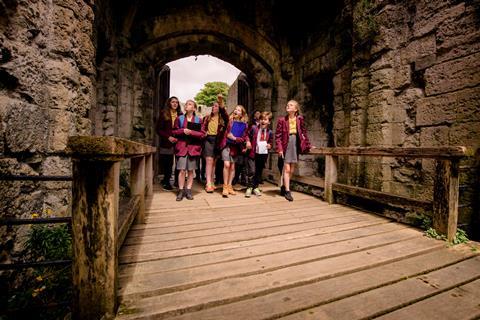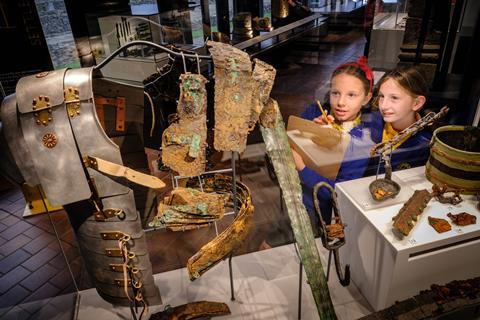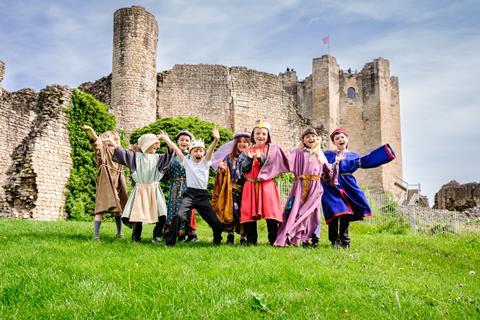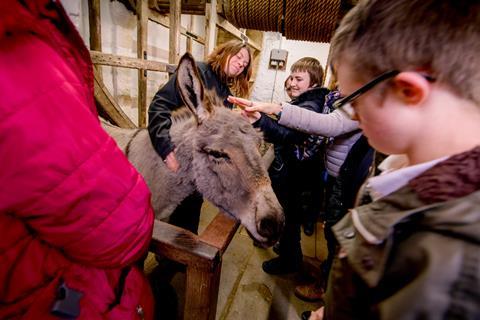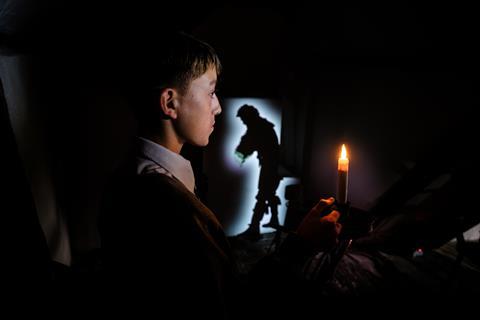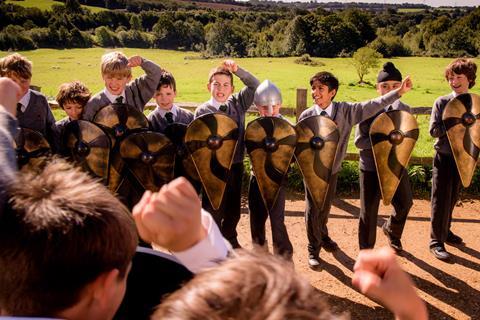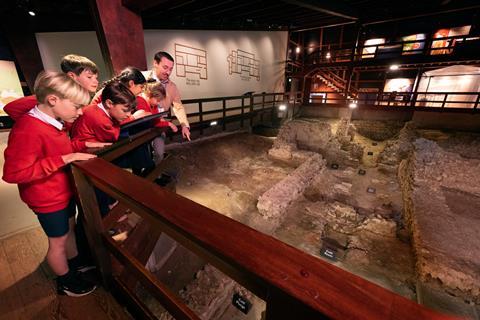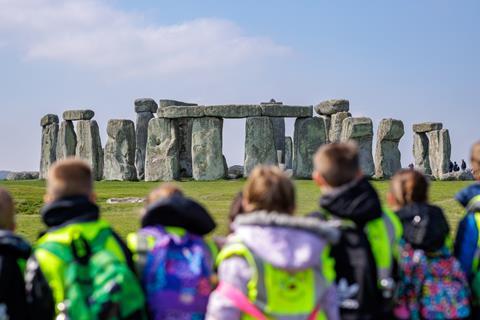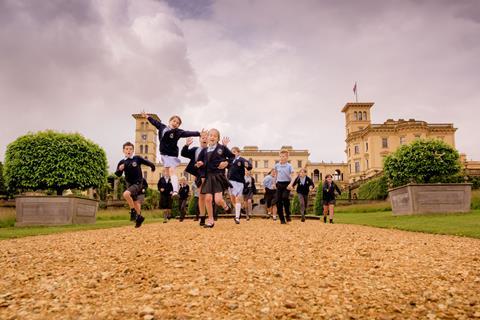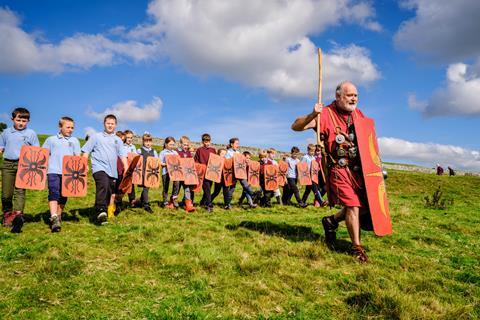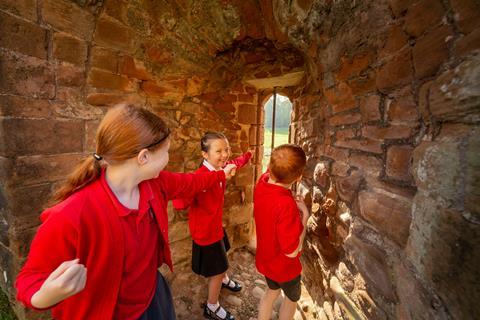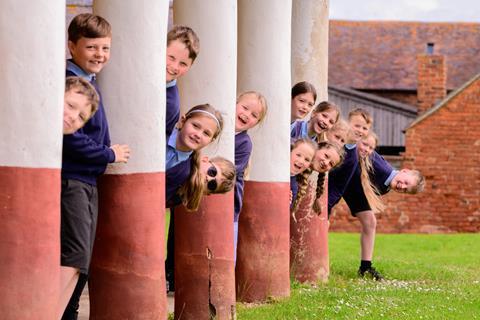Discover a broad range of historical periods across these 14 sites, ranging from the Romans and Tudors, to the Saxons and Victorians.
You can use the arrows to the right and left of the image gallery above to scroll through the pictures, and expand the gallery by clicking the ‘x’ top left. You can read more about each attraction below.
1. Portchester Castle, Hampshire
Step foot inside the Roman walls, explore the ruins of Richard II’s Palace and stand at the top of the Great Tower to survey the landscape.
Schools can also discover the more recent history of the castle as a prison during the French Revolutionary and Napoleonic wars, when it housed up to 8,000 prisoners at any one time.
2. Corbridge Roman Town, Northumberland
Walk in the footsteps of Romans down the high street and imagine collecting supplies from traders, then discover the stories of Corbridge’s Roman residents in the museum.
You will find objects on display including armour, tools, inscriptions on stone, ceramics, and jewellery, all found at the site.
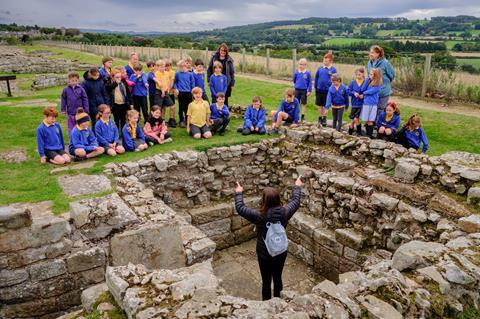
3. Conisbrough Castle, South Yorkshire
Pupils visiting the site can immerse themselves in the world of medieval castles. Make sure they explore the keep to imagine what life would have been like for the wealthy Warenne family and the people who worked inside the fort.
4. Bolsover Castle, Derbyshire
Schools can inspect the castle’s architecture to find out how it was designed to look like a Norman keep, when in reality it was more of a mansion than a defensive structure.
The Riding House Range on-site was created in the 1600s as a place to train horses in the art of dressage and King Charles I even visited the castle prior to the English Civil War.
5. Carisbrooke Castle, Isle of Wight
Carisbrooke has been a settlement since Roman times and illustrates the domestic side of castle life as well as attack and defence. Schools can climb the steps to the top of the Norman keep and imagine how you would defend the castle from invaders.
Students can also discover more about the important role played by its resident donkeys throughout history, turning a huge oak wheel to draw a bucket of water.
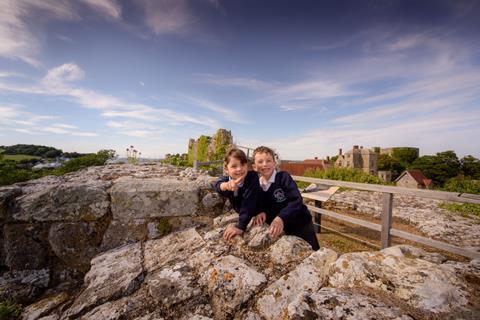
6. Boscobel House and The Royal Oak, Shropshire
The 17th Century hunting lodge is home to several secret hiding spaces around the building, including the attic priest hole where King Charles II hid from Parliamentarian soldiers.
The Royal Oak tree on-site is also a descendent of the original tree that Charles II hid in while trying to avoid capture following defeat at the Battle of Worcester in 1651.
7. 1066 Battle of Hastings, Abbey and Battlefield, East Sussex
What better way to learn about 1066 and the Battle of Hastings than by walking in the footsteps of William the Conqueror and King Harold at Battle Abbey?
Standing where history was made, students can better understand the events leading up to the Battle of Hastings and beyond, as well as what it would have been like charging into battle and daily life of the Benedictine Monks who lived at the Abbey.
8. Dover Castle, Kent
Rising above the famous white cliffs, experience 2,000 years of history at Dover Castle, which includes secret World War Two tunnels, used by soldiers during the conflict as the castle was transformed into the headquarters for the Dunkirk rescue mission.
Schools can also explore 80 acres of grounds which include a Roman lighthouse, plus see inside its many recreated medieval rooms in the Great Tower.
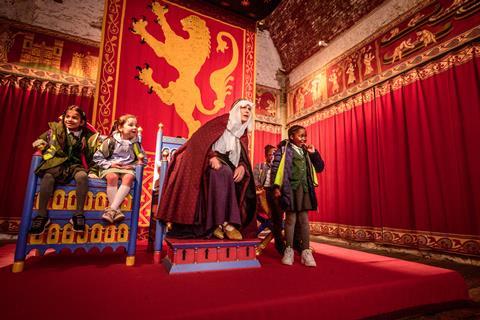
9. Lullingstone Roman Villa, Kent
Said to be one of the most important and complete Roman villas in Britain, Lullingstone has original mosaics to see and a fine collection of artefacts which shed light on its affluent Roman occupiers.
Students will also see rare wall paintings, a heated bath-suite and a specially-commissioned light show which brings the villa back to life.
10. Stonehenge, Wiltshire
A site which needs no introduction, Stonehenge is the most famous landmark under the care of English Heritage, as visitors can follow in the footsteps of the prehistoric people who lived here 4,000 years ago.
The charity says the monument is a powerful testament to human ingenuity, imagination and creativity.
Did you know?
Every single English Heritage attraction featured in this round-up offers downloadable teaching resources which complement schools visits for a range of abilities and Key Stages. For something a little bit more special, expert-led Discovery Days can also be arranged to enhance the visit even further.
11. Osborne House, Isle of Wight
A visit to Osborne gives pupils a glimpse into royal life during the reign of Queen Victoria, with visitors able to explore private apartments and grand reception rooms once used by the second-longest reigning monarch in British history.
Within the grounds of the estate, students can also see the Swiss Cottage, designed as a place for Victoria’s children to play together.
12. Housesteads Roman Fort, Northumberland
Watch as your pupils march in the footsteps of the Roman soldiers through the fort, exploring the buildings where they once lived and worked.
Then, learn about the life of a soldier, including the tools and weapons they used and the clothes they wore, through the objects that were excavated at the fort and are now on display in the museum.

13. Kenilworth Castle, Warwickshire
Kenilworth Castle has been a major military stronghold, a royal palace and an inspiration to writers and artists over the years.
Once one of the country’s most formidable medieval fortresses, the castle was later transformed into a spectacular Elizabethan palace by Robert Dudley in an effort to impress his queen.
14. Wroxeter Roman City, Shropshire
Students can visit a recreated Roman Town House and compare a Roman household to their own homes and way of life.
The on-site museum also showcases many rare artefacts from the Roman period that have been gradually unearthed at the site.
For more information about school visits to these sites, along with hundreds more, go to www.english-heritage.org.uk/learn/school-visits





